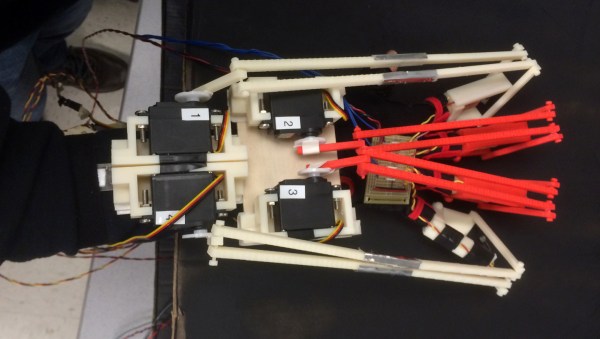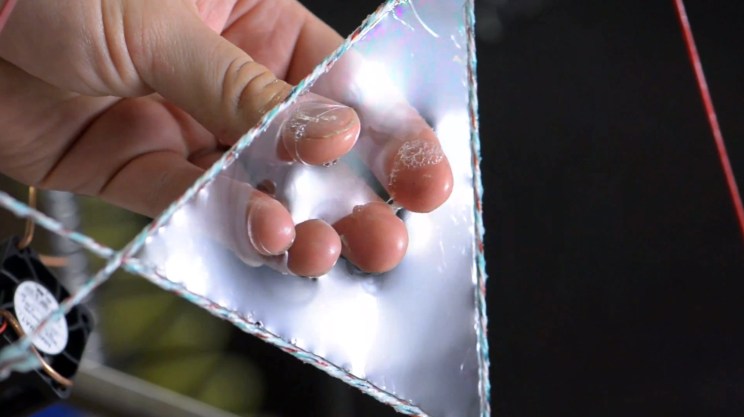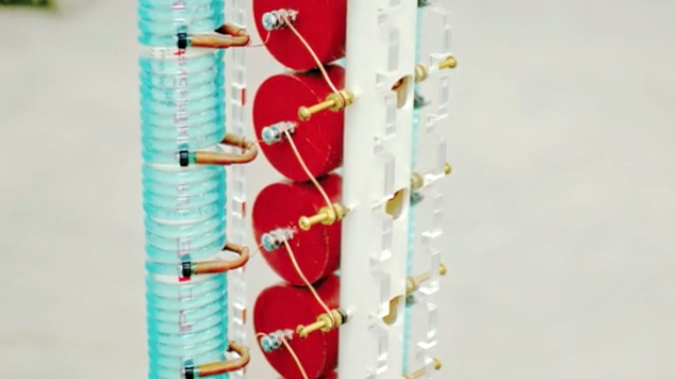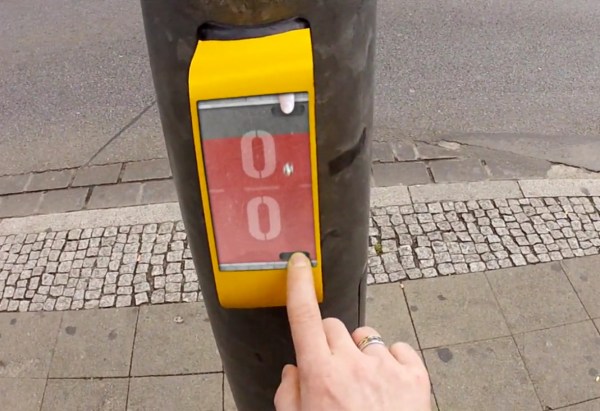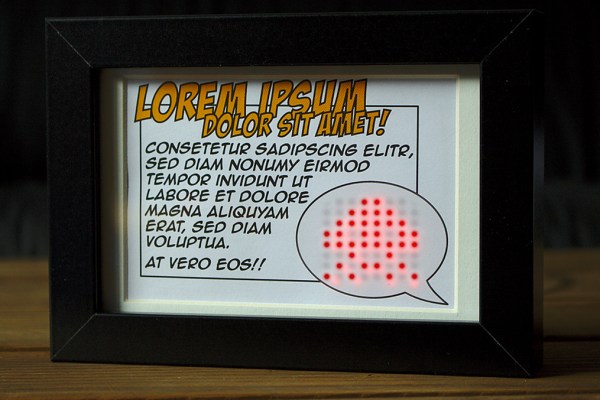If you don’t get along with your orchestra, screw ‘em. [Vladimir Pliassov] proves that you can play each of the virtuosic string instruments yourself, all at the same time (with the exception of the double bass of course).
For the life of me, I can’t imagine how long it took to get situated in this spider’s web of moving parts, but it’s impressive. With the help of this unique mechanical invention all his own, [Vladimir] is able to finger not only the neck of a violin and viola, but also a cello hoisted at an angle below his desk so that he can execute chords with his FEET. To help with the actual sound-making, a complex series of resinous fibers turn on a continuous mill of wooden beams and are tensioned ever so carefully over the bridge of each instrument. [Vladimir] controls which string is making contact with the turning fibers with a pulley wrapped around his thigh that rocks the body of the instrument back and forth.
[Vladimir] gives us an overview of his machine and how it works in the video below. If you’re itching to see it used for the purpose it was created for, well… there’s a video for that too. Even though the quality of the performance suffers a little due to the complicated nature of the setup, [Vladimir] is playing of all things, a piece for the pipe organ by J.S. Bach. Bach being hard mode in any case, let alone the one where you’re playing all the instruments yourself.
Thanks [tinkartank] for pointing out this unique invention. It’s definitely worthy of some awe!


